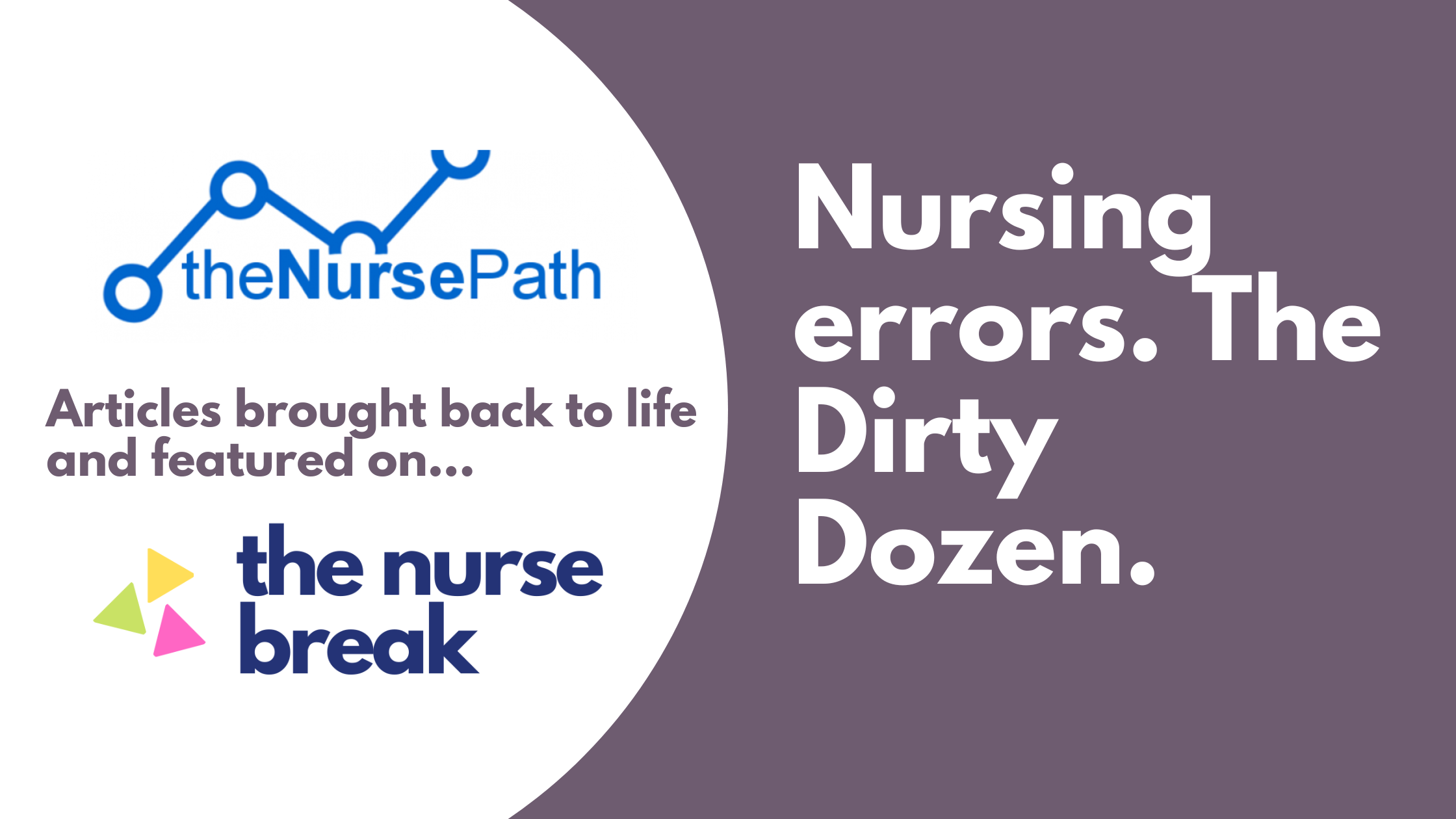Table of Contents
Republished article of The Nurse Path. Find more of The Nurse Path here. Or check out our other articles and guest bloggers here
The Dirty Dozen refers to a set of 12 human factor (human error) conditions or pre-cursors that can contribute to a nursing mistake.
Of course there are many more that these (perhaps you can share some with us from your own experiences).
But here are 12 of the dirtiest….
| Nursing Errors. The Dirty Dozen. | |
|---|---|
| Lack of Communication. | A lack of clear direct statements and good, active listening skills. |
| Complacency. | Self-satisfaction accompanied by a loss of awareness of the potential dangers. |
| Lack of knowledge. | Lack of experience or training in the task at hand. |
| Distraction/ Interruption. | Drawing ones attention away from the task. |
| Lack of teamwork. | Ineffectiveness of working together to achieve a common goal. |
| Fatigue. | Weariness from exertion, shift work, cognitive overload or high workloads |
| Lack of resources. | Failure to use or have access to the appropriate tools, equipment, information and procedures for the task at hand. |
| Pressure. | Internal or external. Working within environments of urgency or haste. |
| Lack of Assertiveness. | Inability to maintain positive, clear communication of one’s ideas, wants and needs. |
| Stress. | Mental, emotional, physical or spiritual tension strain and distress. |
| Lack of awareness. | Failure to apprehend the environment or maintain observational vigilance. |
| Poor organisational resilience | vulnerability to errors at an organisational level. Due to poor commitment, competence and/or cognisance. |
Everyone makes errors. I mean EVERYONE.
It is important to remember that making mistakes or errors is one of the most powerful ways in which we learn and grow as practitioners.
100% of nurses will make at least one clinical error during their career. Most of us will make far more.
Here is some advice on what to do if you make a BIG one.
Just to illustrate this, here is a quick list of some of the errors I have made in over 35 years as a nurse. Some of them have happened more than once. Thankfully none of them resulted in a serious adverse outcome to a patient in my care. It looks pretty bad when you see them all together in a wad, but remember this is across thirty five years.
Each error has its own (often complicated) back-story. I have learned a lesson from each of them.
And yes, despite my errors (and more accurately BECAUSE of them), let me assure you I consider myself a not too shabby clinician and a very safe practitioner.
- Gave medication to wrong patient.
- Gave medication that had already been given.
- Double-checked wrong medication.
- Trod on the foot of a patient with a fractured ankle.
- Multiple occupational exposure (needle stick) injuries.
- Cleaned patients wound with solution that should have been diluted.
- Left patient in urine soaked bed for several hours.
- Went to hang wrong IV fluids (always picked up during 2-nurse check).
- Completed documentation in wrong patients notes.
- Arrived home with unopened ampoule of morphine in my pocket.
- Incorrectly fitted Autopulse (automatic CPR machine) resulting in 3 colleagues covered in gastric contents.
- Took relatives of a deceased patient in to see them before they knew that the patient had died.
- Fed patient who was Nil by Mouth.
- Dropped and broke brand new $30,000 transport monitor.
- Broken or lost patients property.
- Lost a Nuns wooden crucifix (given to her personally by the Pope).
Occasionally errors occur directly due to nurse negligence or incompetence.
But in the overwhelming majority of instances errors will unfold due to complex systems interactions, and no single person should be hung on their hook (this despite many areas of the health that system still slip into a culture of blame seeking when errors do occur).
Even so, you should always remain fiercely accountable for your work.
The important thing is to improve our awareness of the human factors and other environmental precursors that contribute to errors, and to work to minimise their negative-strengths and frequency.
Reference: KNVvL. (n.d.). Retrieved April 21, 2015, from http://www.knvvl.nl/knvvl/veiligheidsmanagement/human-factors/





